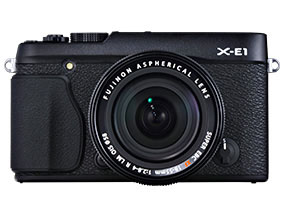(Note: Chuq von Rospach recently tried out a Fujifilm X-Pro1 and wrote about shoot he did with the camera, musing about whether or not it would work for him as a landscape photography camera. I wrote a lengthy comment in reply and since I think it might be useful to others considering these interesting Fujifilm mirrorless cameras, I have decided to share the comment again here, with a few edits. Do note that the X-Pro1 that he used is not the same camera as the X-E1 that I use.)
I’ve been using the Fujifilm X-E1 Digital Camera quite a bit for the past few months. This camera is a mirrorless “rangefinder style” body with an electronic viewfinder. There is also a model with a hybrid electronic and optical viewfinder, the Fujifilm X-Pro1. A decent set of Fujinon lenses is now available with more on the way – see a list at the end of this post. (There’s an earlier report here at my blog – see Fujifilm X-E1: From DSLR to Mirrorless – that article gives a bit more background about these cameras and their unique X-trans sensor. It needs updating now that I have a lot more usage of the camera under my belt, and I plan to write this real review soon.)
I think that the main issue with trying to use the X-Pro1 or the X-E1 as a landscape/nature camera is that this is not really what it is best suited to doing. That said, it could make an excellent lightweight and small backpacker’s or hiker’s camera for those who aren’t trying to do in their photography what I’m trying to do, but who want the potential of very good image quality. The image quality from this camera is quite good considering its diminutive size and weight, but not what you’ll get from a full frame DSLR for sure.
I find that this camera is great for street shooting and other sorts of “on the go” photography done without the tripod, where small size/weight is critical, and where you might want to work somewhat quickly. (Although the AF system is not well suited to shooting particularly active subjects, though there are ways to make it more effective.)
I’m just back from four days in Portland, Oregon, where I used it to shoot urban subjects (mostly) and was grateful for its small size, which allowed me to carry it , along with other non-camera stuff, in a small messenger bag – which, not incidentally, works much better as carry-on luggage that what I must take when I shoot my DSLR. My full frame DSLR would have made for such a large bundle on this trip that the messenger bag wouldn’t have worked, but I could carry this camera (with the 35mm f/1.4 and the 14mm f/2.8) and my small laptop plus all of those other assorted things that typically come along on such a jaunt. Continue reading More Thoughts About the Fujifilm X-E1


